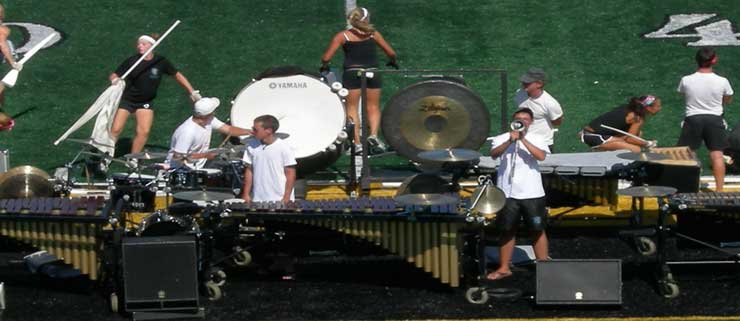 Recently, a close friend and I sat down to play some guitar and saxophone duos. Confronted with the continuing obstacle of navigating through chord changes, our problem solving skills kicked in. We began applying a simple approach to tonal improvisation, and our solos became immediately more focused and coherent.
Recently, a close friend and I sat down to play some guitar and saxophone duos. Confronted with the continuing obstacle of navigating through chord changes, our problem solving skills kicked in. We began applying a simple approach to tonal improvisation, and our solos became immediately more focused and coherent.
The method we started using was based on guide tones or target tones. Most jazz players have been taught to target thirds and sevenths when improvising. By aiming for thirds and sevenths, the improvised line will reflect the chord progression of a tune.  However, this may be easier said than done at blistering tempos with chords flying by at two per measure.
Looking to simplify, the tactic my friend and I adopted was to compose a single line of music using one whole note per bar.  We were working on Charlie Parker’s famous bebop composition Confirmation.  I will use the first five measures of this piece as an example.
To compose our line of whole notes, while targeting thirds and sevenths, begin with A in the first measure (the third of Fmaj7). In the second measure, move down a whole step to G, which is the third of Emin7b5 and the seventh of A7.  This same harmonic relationship is true in the third and fourth bars by continuing our whole note line with F and Eb respectively. The target tone Eb in the fourth bar then resolves down a half-step to D (the third of Bb7).  Below I have indicated the chord changes to Confirmation with the composed guide tone line below each measure in parenthesis.
| Fmaj7 | Emin7b5 A7 | Dmin7 G7 | Cmin7 F7 | Bb7 |
( A )Â Â Â Â Â ( G )Â Â Â Â Â Â Â Â Â Â Â Â ( F )Â Â Â Â Â Â Â Â Â Â ( Eb )Â Â Â Â Â Â Â ( D )
Now, rather than attempting to arbitrarily hit the correct thirds and sevenths, we have composed a simple descending line of music that will function as a framework for an improvisation.  The target tones in the composed line can be thought of as marker points. This can be viewed as a musical game of connect-the-dots. Aim for the guide tones from the composed line on or near the downbeat of each measure.  Then fill in the space with eighth notes.  My friend and I discovered that we could play practically anything in the spaces.  As long as we arrived at the guide tones, our improvisations would reflect or at a minimum, acknowledge the chord changes.
This method can be put into practice on any tune.  Work through the changes and compose a line that targets thirds and sevenths.  Try to keep the intervals within the composed line small (seconds or thirds) so that the resulting guide tone line resembles a scale. By using the composed line as a framework for an improvisation, the solo will contain a built-in sense of cohesion and inner logic.  Good luck nailing the changes!
Special thanks to Dr. John Cooper, head of the Jazz Department at Western Illinois University, for introducing me to this approach towards improvisation.
Â







 Scroll down to view the comparison chart of over a dozen different portable digital audio recorders.
Scroll down to view the comparison chart of over a dozen different portable digital audio recorders.